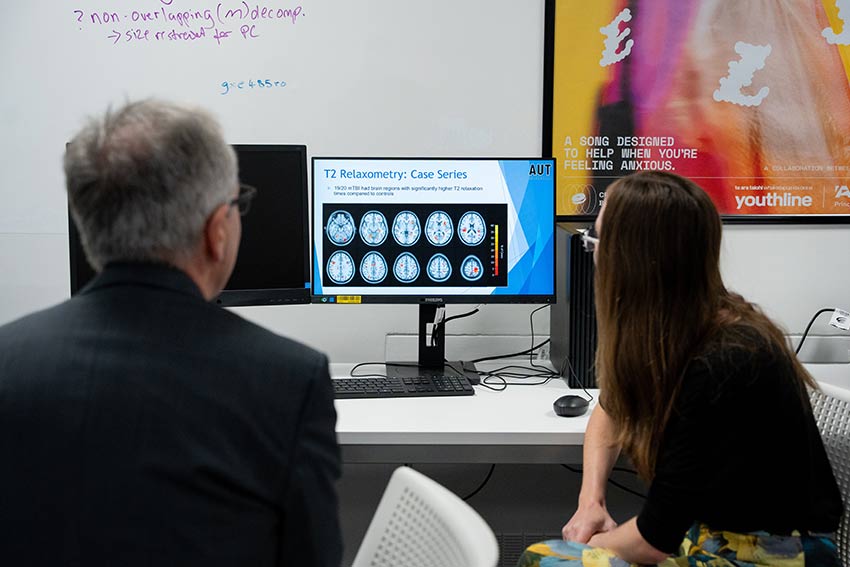New brain lab ‘a beacon for hope’

September 11 marked a new era for brain research at AUT with the opening of the updated AUT Cognitive and Computational Neuroscience laboratory in building AB on North Campus.
“This is a bold step forward in AUT’s commitment to understanding the human brain,” says Psychology and Neuroscience Associate Professor Mangor Pedersen.
“We hope our lab is a beacon of hope for those affected by neurological and cognitive challenges.”
The ceremony was attended by Chancellor Rob Campbell, Vice-Chancellor Professor Damon Salesa, HES Faculty Dean Professor Brett Cowan, and other distinguished guests.
“This facility empowers our researchers and students to explore the complexities of cognition, behaviour, and neurological health using technologies like EEG,” Dr Pedersen continues.
“Psychology can often be done with pen and paper, but you can’t do neuroscience without equipment.”
The equipment in the laboratory is designed to allow academics and researchers to expand AUT’s already world-leading neuroscience research in areas like concussion, epilepsy, cognitive science and AI.
Dr Pedersen says research teams - including those from the Women’s Health and Neuroscience Programme and the AUT Brain Health Research Institute - are pioneering approaches that are already shaping the future of healthcare, and the laboratory will encourage more groundbreaking research with global impact.
“From investigating speech and language disorders to decoding subconscious decision-making, the lab is home to research that is not only innovative but globally recognised,” Dr Pedersen says.
“The establishment of this lab shows AUT’s commitment to the next frontier of research.”
Professor Paul Sowman, Head of School - Science, says the laboratory is a hub for multidisciplinary collaboration.
“Our researchers work across fields including psychology, physiotherapy, computer science, and linguistics, fostering breakthroughs that wouldn’t be possible in isolation,” he says.
"We’re proud that this lab will serve as a training ground for AUT’s future neuroscientists, psychologists, and AI innovators. It’s a place where students can engage in hands-on research, contribute to real-world solutions, and be mentored by world-class experts.
The lab is equipped with cutting-edge EEG systems for investigating brain function, alongside tools for autonomic nervous system monitoring and immersive virtual reality setups.
There are also hopes the new lab will be the future home of New Zealand’s first Optically Pumped Magnetometer (OPM) MEG scanner—an innovative, wearable brain imaging technology that allows for real-time, high-resolution mapping of brain activity, even while the patient moves.
Fundraising continues for the scanner, with the OPM-MEG having the ability to transform how conditions like epilepsy, traumatic brain injury, and dementia are diagnosed and treated.
As well as academics and researchers Associate Professor Daniel Shepherd and Dr Dion Henare, the lab supports more than 300 undergraduate students and facilitates extensive research in MRI and artificial intelligence.
“We want our work to be leading in the field of neuroscience,” says Dr Pedersen.
“In such a fast-moving discipline, this requires access to advanced equipment and the capacity to push the boundaries of brain science”
“The work done here has direct implications for improving lives—from better diagnosis and treatment of neurological conditions, to enhancing mental health support and rehabilitation,” Dr Pedersen concluded.